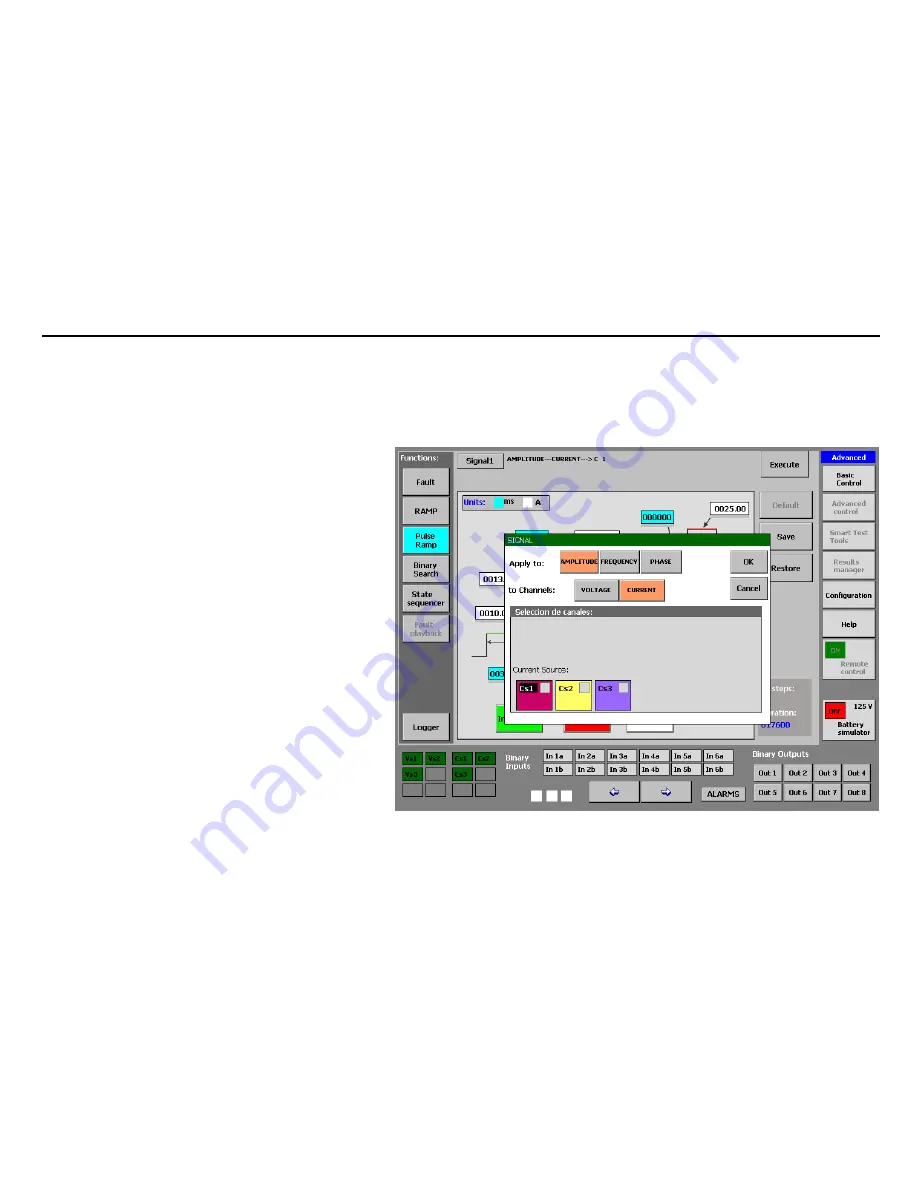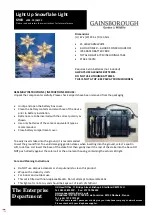
MENTOR 12 USER’S MANUAL
SECTION 3: ADVANCED CONTROL – Page 66
The basic difference with respect to the Ramp function described above is that instead
of continuously increasing the magnitude, a preset condition state occurs between each
increase (normally an equivalent state to a Pre-Fault) so this function permits “quitting”
the fault conditions and “entering” them with each increase.
As it is possible in this function to define ALL the magnitudes that are not selected to be
varied during the ramp, what we really have here is a way of
carrying out a FAULT ramp, each state with its pre-fault and
its fault.
This function is preferably used when instantaneous or
defined time values are sought in Overcurrent elements, as it
enables us to inject a high current value during a specified
time and return to low current conditions or even non-existing
current conditions between each programmed increase, thus
eliminating the possibility of damaging the relay tested.
It is also very useful when you wish to verify trip setting
values in Protection Areas (typical application to test area
limits in remote relays), as we can enter the area for a
defined time and exit it without causing trips of the other
slower areas with each increase.
The selectivity that is achieved with this function when
selecting the trip elements, makes it very interesting to use
when testing trip outputs of relays that have different
protection functions assigned to them at the same time, thus
avoiding the need to change the configuration of the relay
being tested.
Only pulse ramps can be carried out simultaneously, unlike
the linear ramp described in the previous section.
Configuration
















































